 Most viewed - Takashima 高島市 Most viewed - Takashima 高島市 |

Souvenirs also sold in the museum.59 views
|
|

Water lilies59 views
|
|

The other quadruple with cox boat.58 views
|
|

58 views
|
|

Tall bamboo poles called O-nobori at Tsuno Shrine for the Kawakami Matsuri in Imazu, Takashima. They are about 20 meters tall. 大幟58 views
|
|

The young men performing the yakko-furi come from one of the eight former villages in the area. The former villages take turns in participating in the yakko-furi procession.58 views
|
|

58 views
|
|

58 views
|
|

At about 2:40 pm, the yabusame horseback archery began with the yakko-furi boys running down the path.58 views
|
|

Omizo Matsuri float passing by Omi-Takashima Station.58 views
|
|

58 views
|
|

Torii at Hiyoshi Jinja Shrine. 日吉神社58 views
|
|

58 views
|
|

58 views
|
|

There's also a line from Biwako Shuko no Uta (Lake Biwa Rowing Song). My kind of bus.58 views
|
|

Lots of cherry blossoms greet boat passengers.58 views
|
|

After lunch, the yakko-furi arrived at the shrine at around 1 pm.57 views
|
|

The yakko-furi proceeded to the steps leading to the shrine and then dispersed.57 views
|
|

Yabusame horseback archer.57 views
|
|

57 views
|
|

The horseback archer on his third run. He spread his arms while holding a bow and arrow, but did not shoot any arrows. 57 views
|
|

The wheels are pretty small compared to other floats in Shiga.57 views
|
|

57 views
|
|
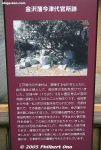
About the remains of the Kaga Clan's magistrate's office.57 views
|
|
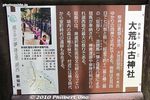
About Oarahiko Shrine in Japanese.56 views
|
|

56 views
|
|

Eight horses waiting.56 views
|
|

56 views
|
|

After his first run, the horseback archer trots back.56 views
|
|

56 views
|
|

They made their way up to the shrine.56 views
|
|

Hiyoshi Jinja Shrine. MAP56 views
|
|

56 views
|
|

56 views
|
|

56 views
|
|

56 views
|
|

56 views
|
|

56 views
|
|

Tapestry on the back of Takara hikiyama float.56 views
|
|

JR Omi-Imazu Station platform56 views
|
|

Imazu Port in spring.56 views
|
|

Exhibit about Yoshida Chiaki who composed the original melody.56 views
|
|

55 views
|
|

55 views
|
|

Turned out that the umbrella holder was his papa whom he had missed.55 views
|
|

55 views
|
|

A procession of musicians went up the steps and walked around the shrine.55 views
|
|

55 views
|
|

The musicians and umbrella holders go back down from the shrine.55 views
|
|

55 views
|
|

55 views
|
|

55 views
|
|

At around 7:30 pm, they all gathered here near the hospital and took a break. 分部神社前55 views
|
|

Omizo Matsuri float passing by Omi-Takashima Station.55 views
|
|

55 views
|
|

55 views
|
|

Each float has a tapestry on the back. This is the Ryu hikiyama float.55 views
|
|

Tapestry behind the Isamu hikiyama float.55 views
|
|

Tomoe hikiyama float (巴)55 views
|
|

JR Omi-Imazu Station55 views
|
|

Pictures of Lake Biwa Rowing Song monuments in Shiga. One for each of the six verses in the respective locations mentioned in the song.55 views
|
|

55 views
|
|

Imazu Port. The end of the pier has a red lamp which is also a song monument for Biwako Shuko no Uta (Lake Biwa Rowing Song).55 views
|
|

End deck of megumi.55 views
|
|

54 views
|
|

54 views
|
|

At 2 pm, they had a ceremony with the shrine priest and representatives from the eight former villages.54 views
|
|

54 views
|
|

Then this cute little boy wandered in.54 views
|
|

54 views
|
|

The horseback archer faced the shrine and gave a ritualistic prayer with a bow at 2:20 pm. He was followed by the eight horseback riders who bowed to the shrine.54 views
|
|

They pay their respects to the shrine.54 views
|
|

54 views
|
|

And they run again ahead of the horse.54 views
|
|

54 views
|
|

And went to carry the mikoshi inside the Haiden Hall.54 views
|
|

Pulling the Ryu (龍) hikiyama.54 views
|
|

Float pullers definitely look better with happi coats.54 views
|
|

54 views
|
|

The shrine priest blesses each hikiyama.54 views
|
|

54 views
|
|

Water lilies from the Niigata home of Chiaki Yoshida who composed the melody of Lake Biwa Rowing Song. From the original plant that Chiaki planted.54 views
|
|
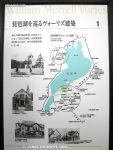
William Merrell Vories architecture map of Shiga.54 views
|
|

53 views
|
|

53 views
|
|

Then the remaining horses ran a few times as well, three times each.53 views
|
|

The yakko-furi approach the steps to the shrine.53 views
|
|

53 views
|
|

They didn't have any signs indicating the name of the float. Isamu hikiyama float (勇).53 views
|
|

JR Omi-Imazu Station in spring with colorful azaleas.53 views
|
|

JR Omi-Imazu Station's tourist information booth where you can pick up pamphlets and rent a bicycle.53 views
|
|

Song museum's listening station where you can listen to many cover versions of the Lake Biwa Rowing Song recorded by Japanese singers and groups.53 views
|
|

53 views
|
|

Records of the song by various artists including Tokiko Kato.53 views
|
|

At Imazu Port, the boat named "megumi" goes to Kaizu-Osaki.53 views
|
|

Upper, open-air deck of megumi.53 views
|
|

52 views
|
|

52 views
|
|

Then they ran up the steps.52 views
|
|

52 views
|
|

A short mikoshi procession led by the shrine priest.52 views
|
|

Finally the last hikiyama is parked along side the others.52 views
|
|

megumi at Kaizu-Osaki Port.52 views
|
|

Just beware of the cars on the narrow road.52 views
|
|

They were soon followed by a horse galloping at full speed.51 views
|
|

51 views
|
|

51 views
|
|

After the yabusame, the yakko-furi boys performed without the targets. This was around 3:40 pm.51 views
|
|

51 views
|
|

51 views
|
|

Inside the old song museum.51 viewsThe song is about the boys rowing around Lake Biwa while mentioning famous places like Otsu (the starting point), Omi-Maiko (Omatsu), Imazu, Chikubushima, Nagahama, and Chomeiji.
|
|

Exhibit about Oguchi Taro who created the song.51 views
|
|

Kaizu-Osaki coast ahead.51 views
|
|

More yabusame.50 views
|
|

50 views
|
|

A short prayer by the shrine priest.50 views
|
|

50 views
|
|

49 views
|
|

Next, the horseback archer approached the shrine.49 views
|
|

49 views
|
|

Putting on the phoenix ornament atop the mikoshi.49 views
|
|

Inside megumi with large picture windows.49 views
|
|

48 views
|
|

48 views
|
|

The procession leaves Tsuno Shrine. At Hioki Shrine, they also held a Shinto ceremony and had a procession leaving the shrine.47 views
|
|

47 views
|
|

46 views
|
|

46 views
|
|

The children played music.44 views
|
|

The O-nobori is now horizontal, carried by the people in the procession.44 views
|
|

44 views
|
|

43 views
|
|

The procession with the O-nobori reaches the Otabisho at around 1 pm.42 views
|
|

After the Shinto ceremony, they got ready in a procession. Also see my YouTube video here.42 views
|
|

The procession headed for the Otabisho which is halfway between Tsuno Shrine and Hioki Shrine.42 views
|
|

They start to prop up the O-nobori at the Otabisho.42 views
|
|

42 views
|
|

The mikoshi procession also arrived at the Otabisho.42 views
|
|

42 views
|
|

They finally brought the O-nobori all the way across the Otabisho.42 views
|
|

Tsuno Shrine also had a mikoshi portable shrine.41 views
|
|

They proceed through rice paddies.41 views
|
|

Moving a car in the way of the procession.41 views
|
|

They took down the O-nobori.41 views
|
|

41 views
|
|

41 views
|
|

41 views
|
|

Then they had yabusame with horse runs down the Otabisho. No arrow shooting though.41 views
|
|

41 views
|
|

40 views
|
|

The procession start to leave Tsuno Shrine.40 views
|
|

40 views
|
|

The Kawakami Matsuri is also called the Sanyare Matsuri. The festival starts with a Shinto ceremony at both Hioki and Tsuno Shrines. This is Tsuno Shrine.40 views
|
|

40 views
|
|

Then they slowly dragged the two O-nobori poles across the Otabisho.40 views
|
|

40 views
|
|

Three community groups participate in Kawakami Matsuri. They rotate every year for taking care of the O-nobori, mikoshi, and sanyare dance and music.40 views
|
|

Prayers in front of the mikoshi.40 views
|
|

40 views
|
|

The two O-nobori stand tall at the Otabisho which would be the main venue for the Kawakami Matsuri.39 views
|
|

Tsuno Shrine torii. 津野神社 MAP39 views
|
|

39 views
|
|

At Tsuno Shrine, they had a pair of tall, decorated bamboo poles called O-nobori. 大幟39 views
|
|

This is the Otabisho, called Hegasaki Banba which is a horse-running ground. 平ヶ崎馬場 MAP39 views
|
|

39 views
|
|

39 views
|
|

39 views
|
|

39 views
|
|

38 views
|
|

They paraded the mikoshi around the Otabisho.38 views
|
|

38 views
|
|

38 views
|
|

Otabisho38 views
|
|

Children doing sanyare dance at Kawakami Matsuri.38 views
|
|

Top of O-nobori poles. The red, white, and blue motif caught my American eye. 37 views
|
|

Base of the O-nobori poles.37 views
|
|

The procession leaving Tsuno Shrine as they carry the O-nobori poles.37 views
|
|

37 views
|
|

37 views
|
|

37 views
|
|

37 views
|
|

36 views
|
|

36 views
|
|

35 views
|
|
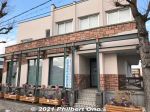
The main road also has this old Biwako Shuko no Uta Shiryokan (Lake Biwa Rowing Song) song museum which has closed. It moved to another building nearby.32 views
|
|
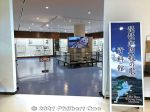
The new museum occupies a large corner of the building's first floor. It's on the left when you enter the building.32 views
|
|
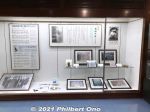
Exhibit for Yoshida Chiaki, credited for composing the original melody.32 views
|
|
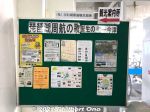
"Birthplace of Biwako Shuko no Uta" (Lake Bwa Rowing Song) on a bulletin board in the train station.31 views
|
|
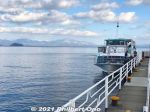
"Interlaken" cruise boat at Imazu Port with Chikubushima and Mt. Ibuki in the background.31 views
|
|
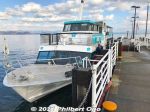
"Interlaken" cruise boat at Imazu Port.31 views
|
|
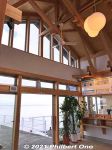
Imazu Port building is made of wood from Shiga.31 views
|
|

Old tourist PR posters for Lake Biwa. Great design. They don't make them like that anymore.31 views
|
|

The new Biwako Shuko no Uta Shiryokan (Lake Biwa Rowing Song) song museum is now in this building since April 1, 2020. This is the Imazu-Higashi Community Center (今津東コミュニティセンター).31 views
|
|
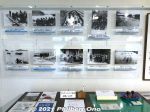
Photos of the Kanazawa college rowers who died due to strong winds that capsized their boat in 1941.31 views
|
|
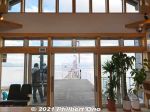
Imazu Port's gate to the boat dock.30 views
|
|
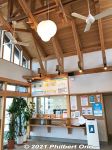
Boat ticket office.30 views
|
|
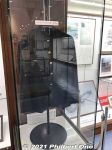
Uniform of the Dai-sanko college where Oguchi Taro studied.30 views
|
|
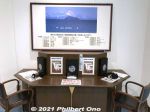
CD listening station where you can listen to numerous cover versions of the song by famous artists.30 views
|
|
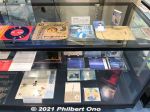
Old records of the song.30 views
|
|

Old records of the song covered by many famous Japanese singers.30 views
|
|
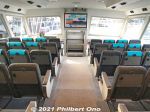
Inside Interlaken. 29 views
|
|

Ceiling.29 views
|
|

Imazu Port also has this song monument for Biwako Shuko no Uta (Lake Biwa Rowing Song). 琵琶湖周航の歌 歌碑29 viewsThe song is about college boys from Kyoto rowing around Lake Biwa while mentioning famous places like Otsu (the starting point), Omi-Maiko (Omatsu), Imazu, Chikubushima, Nagahama, and Chomeiji.
|
|

The Imazu-Higashi Community Center (今津東コミュニティセンター) is across from the Imazu Shimin Kaikan concert hall. 29 views
|
|
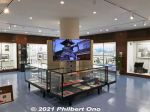
It seems all or almost all the exhibits in the old museum have been moved to this new space.29 views
|
|
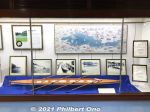
The accurate scale model of a fixed-seat boat is also displayed.29 views
|
|
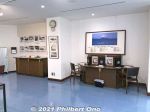
29 views
|
|
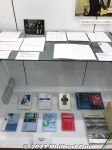
Iida donated his notebooks and cassette tapes of many interviews related to the song. Some of it is displayed here.29 viewsOn the lower shelf are books about the song by Iida and others.
|
|

Unlike the old museum, the relocated museum does not have a gift shop. However, it does sell these stationary.29 views
|
|

Heading to the new Imazu Port building. On the right is the Biwako Shuko no Uta (Lake Biwa Rowing Song) song monument.28 views
|
|
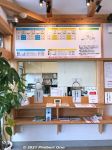
Boat ticket office operated by Biwako Kisen.28 views
|
|

The new Imazu Port, opened in March 2020. Completely rebuilt.28 views
|
|
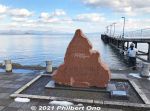
Biwako Shuko no Uta song monument at Imazu Port. In June 1917, a song called Biwako Shuko no Uta (Lake Biwa Rowing Song) was composed by college student Taro Oguchi during a boat rowing trip around Lake Biwa.28 views
|
|

If you are walking from Omi-Imazu Station, you can see this large sign on the side of the old song museum showing the way to the relocated song museum.28 views
|
|

Exhibit for Oguchi Taro who composed the song.28 views
|
|

A few old parts from a lake cruise boat. Compass, lamp, and other things.28 views
|
|

You can therefore traverse northern Lake Biwa between Nagahama/Hikone and Imazu via Chikubushima. Approaching Imazu by boat.27 views
|
|
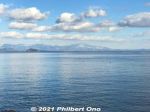
From Imazu Port, Chikubushima island and Mt. Ibuki can be seen across the lake.27 views
|
|

At the end of Imazu Port's dock, the lantern is a song monument for Verse 3 of Biwako Shuko no Uta (Lake Biwa Rowing Song).27 views
|
|
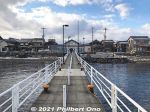
Imazu Port dock to the port building.27 views
|
|

Rear view of Imazu Port building. Rebuilt and opened on March 22, 2020.27 views
|
|
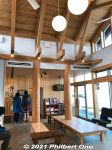
Waiting room inside Imazu Port building.27 views
|
|
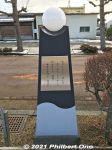
On the main road between Imazu Port and Omi-Imazu Station are sidewalk lights engraved with song lyrics. This has Verse 3 which mentions Imazu.27 views
|
|
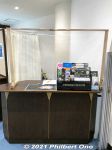
The museum is staffed by volunteers unlike the old museum which was staffed by employees from the local tourist office.27 viewsAlso see my blog post about the museum: https://shiga-ken.com/blog/2022/01/lake-biwa-rowing-song-museum/
|
|

27 views
|
|

This is Imazu as the boat approaches Imazu Port. Small, quiet town anchoring the northwestern part of the lake. Tourist base for exploring this part of Shiga and the lake.26 views
|
|
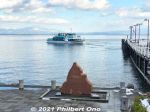
You can also get to Imazu by boat from Chikubushima island. Imazu Port has boats going to/from Chikubushima. On the eastern shore, Nagahama and Hikone have boats going to Chikubushima.26 viewsAt Imazu Port, boat named "Interlaken" operated by Biwako Kisen cruises to/from Chikubushima.
|
|

Inside Interlaken. The boat also has an outside deck.26 views
|
|
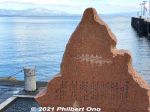
Oguchi Taro was a member of the rowing club at Dai-san High School (now Kyoto University). He composed it in Imazu, Shiga Prefecture during the second night of the trip.26 views
|
|
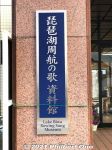
The museum sign includes English! Official English name is "Lake Biwa Rowing Song Museum."26 views
|
|

Showcase dedicated to the works of the late song researcher Iida Tadayoshi who spent many years researching the song from the 1970s. 26 viewsHis books and booklets about the song greatly contributed to the understanding of the song, how it was created, and the people behind it.
|
|

If you are walking from Omi-Imazu Station on the main road, turn left.25 views
|
|
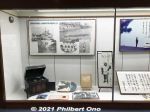
Photos of Imazu in 1917.25 views
|
|

About the song lyrics.25 views
|
|
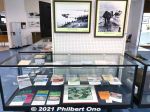
Display of Biwako Shuko no Uta calendars featuring the kirie works of ??.25 views
|
|
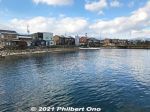
Near Imazu Port.24 views
|
|
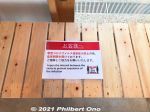
Social distancing on benches, but bad English. よい子のみなさん、この英語はダメですよ。無視してください。24 views
|
|

The museum has only one room in a square layout with glass cases and exhibits. The middle has a small showcase as well.24 views
|
|
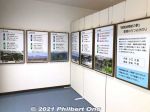
Song lyrics for all six verses.24 views
|
|
|
| 995 files on 4 page(s) |
 |
4 |
|